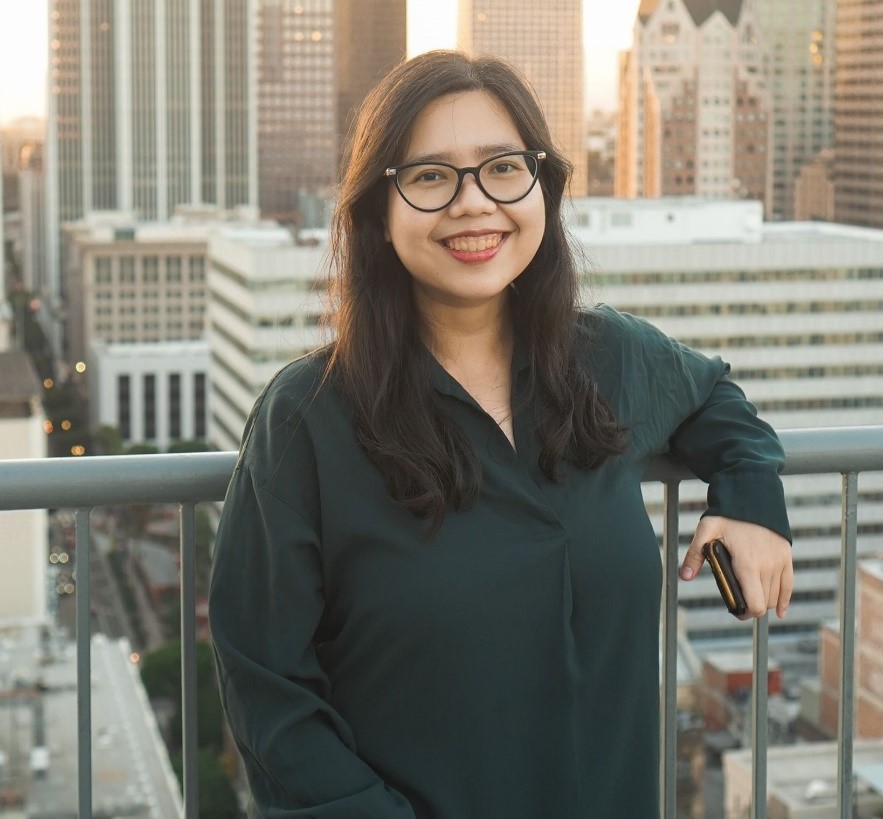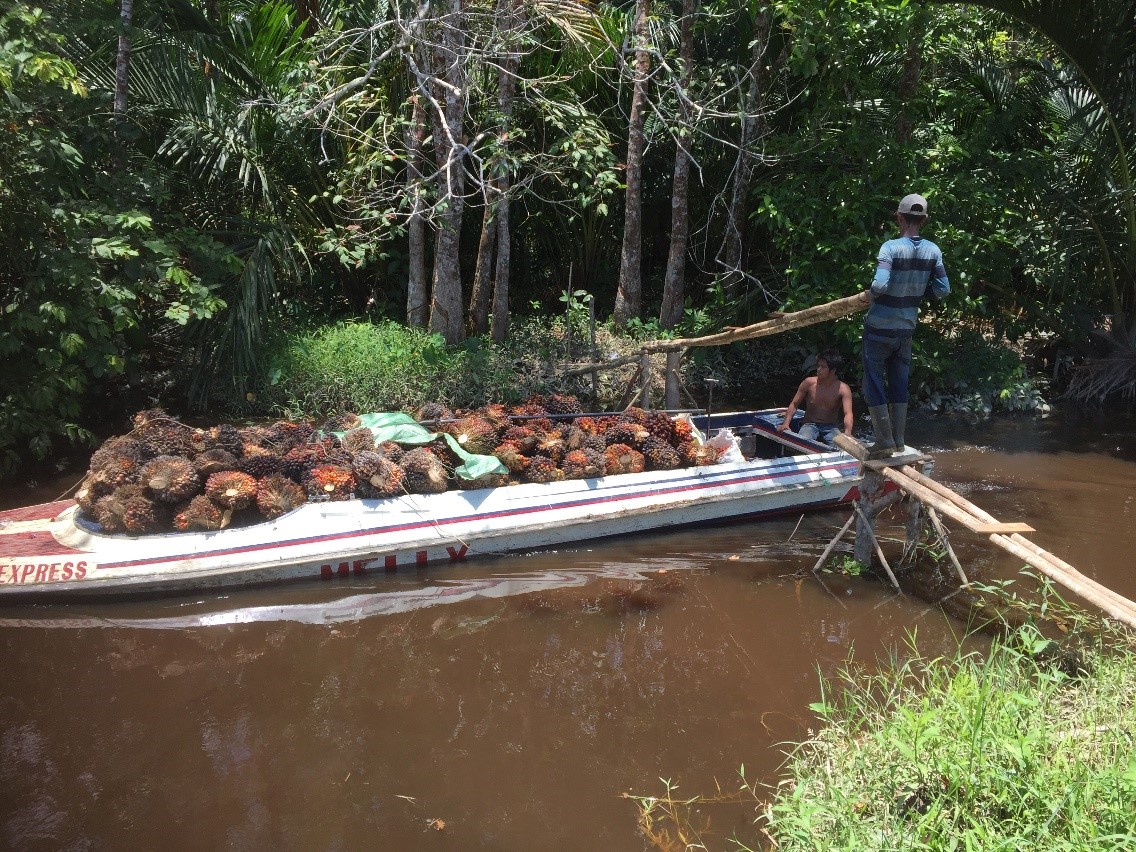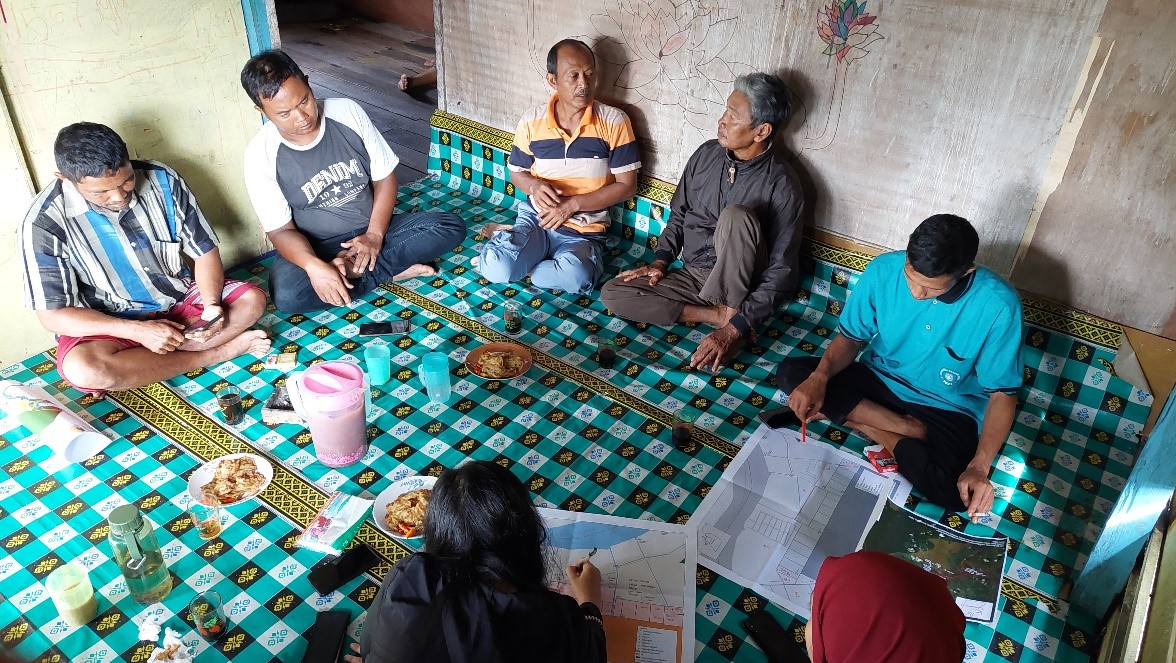Stories
People and Peatland Management Complexity in Permata Village
Sep 5, 2022 by Dede Sulaeman and Annisa Nisitha NindyariniBanner Image By : Dede Sulaeman/WRI/PFP
“Unique” seems to be the perfect word to describe the Permata Village. Located in Terentang District, Kubu Raya Regency, West Kalimantan, this is one of the villages chosen for the government’s transmigration program, a policy aimed at equitable population distribution.
The transmigration program in Permata Village began in 2012, when the village, located within the Kapuas-Terentang Peat Hydrological Unit (KHG) area, was selected as one of the locations for the national domestic transmigration program Kota Terpadu Mandiri (KTM). Under this program, the Kubu Raya Regency government proposed transmigration between regencies in Java and Sumatra. This was motivated by the various dilemmas faced by Permata Village, especially in the early 2000s when the ban of illegal logging was enacted, leaving the local community scrambling for alternative livelihoods.
Facing low population and inadequate infrastructure, the Permata Village council, which was initiated by the community, wanted to involve external actors in the village development through oil palm plantation establishment and processing factory construction, as well as a proposal for a transmigration program in the village.

It needs to be highlighted that the transmigration program carried out in Permata Village is an oil palm plantation-based program. Preparations were made to ensure the transmigrants’ ability to support the palm oil industry in this 27,275-hectare village. Such transmigration process goes beyond the physical movement of a group of people from one location to another. It requires the transfer and acculturation of culture, language and perspective on peatlands, the dominant marginal land [1] in Permata Village.
The transmigrants brought with them a view on peatland management that contrasted with the local community’s. Before their arrival at Permata Village, they had this idea that they would use monoculture[2] farming as oil palm farmers. Meanwhile, the local community had grown accustomed to varying their sources of livelihood from rubber, jengkol, petai and vegetables farming to fishing. Moreover, the government’s transmigration program also gave rise to land conflicts, especially between transmigrant communities and oil palm plantation companies.
These facts were the driving force behind Yustina Octifanny’s, a researcher who received a grant under the EU SUPA Component 2 project, decision to conduct research in this village under the title “Land Tenure Classification and the Involvement of Local Community in Sustainable Peatland Management on West Kalimantan Peatlands". Through this research, she wanted to show the complexity of peatland management due to the different perspectives of the different actors in Permata Village. This research provided a perspective on the protection and use of peatlands amid intensive transmigration programs and land extensification[3] for plantations. The research produced several interesting findings.

Permata Village consists of four hamlets: Kuala Jaya and Harapan Baru, where the locals reside, and Dusun Mutiara Jaya and Setia Jaya, where the transmigrants reside. Since the 1980s, rubber farming has always been the main source of livelihood for the locals at Permata Village. However, this began to change along with the landscape when oil palm plantations and mills began operating in this village in 2010. Since then, secondary forests have been converted into oil palm plantations, especially in the Setia Jaya and Mutiara Jaya Hamlets (transmigration areas). Dominating such land conversion in these two hamlets is the conversion of secondary peat swamp forests into shrubs and oil palm plantations.

This research also revealed the large number of low-quality oil palm seeds and fake fertilizers circulating in Permata Village. Very few farmers have the established social network in Jambi, Riau or North Sumatra needed to bring high quality and certified seeds to their village. The use of low-quality oil palm seeds and fertilizers greatly reduced land productivity and gave rise to land extensification by the communities and plantations in the effort to achieve the desired level of palm oil production.
It's not all bad news for peatland management in this village, however. Land clearing by burning has been abandoned in the village, especially after the severe fire in 2015. However, the use of excavators for canal construction and land clearing has been on the rise, which needs to be addressed. This use of such heavy equipment has the potential to have future adverse impact, such as more severe peatlands drainage, which will in turn make them more flammable, as well as land subsidence. It is clear that land fires have garnered far more attention in this village than the issue of damage from drainage canals construction. In relation to commodity diversification, government and private actors have tried to introduce the intercropping technique[4] where ginger, dragon fruit and chilies are planted in between the oil palms. However, such effort has mostly failed due to pests and plant diseases.
From this research, it can be concluded that peatland management is greatly influenced by the people living in the area. Permata Village provides a clear image of the complexity of peatland management with the involvement of oil palm plantations and mills as well as transmigration programs. Given the importance of the community aspect in peatland management, hopefully more community-based peatland researches will be conducted and more peatland-related researches prioritize social or community aspects.

[1] Marginal lands are lands with little to no potential for agriculture
[2] Monoculture farming is a form of agriculture where only one type of crop is grown on a specific field
[3] Land extensification is an agricultural endeavour through the clearing of new lands
[4] Intercropping technique plants two or more crops on one land